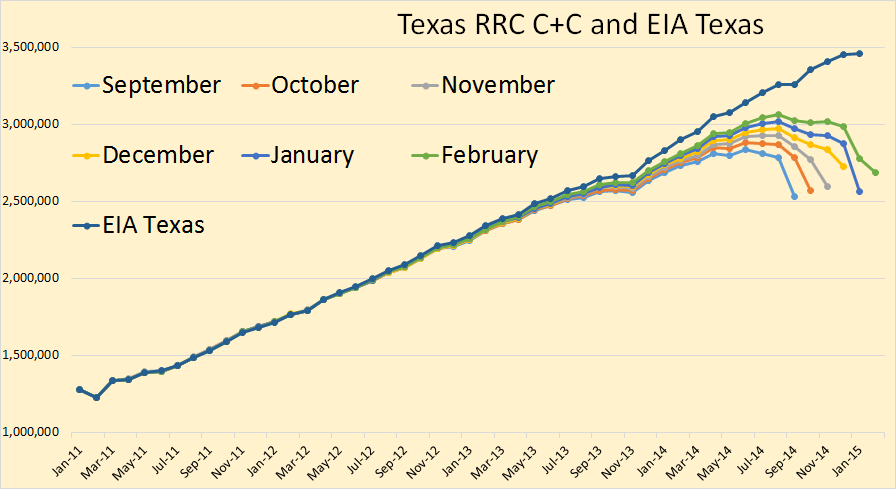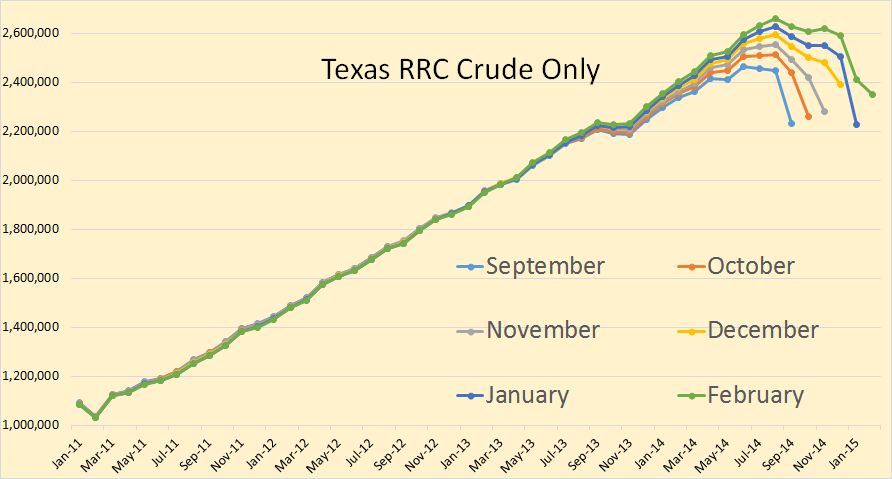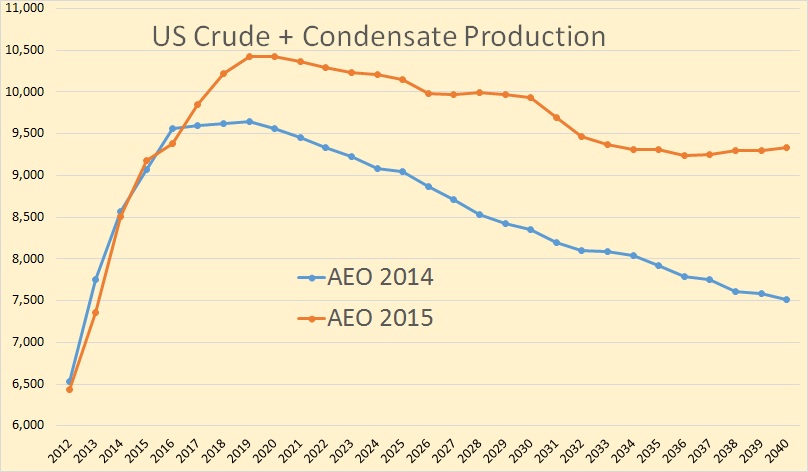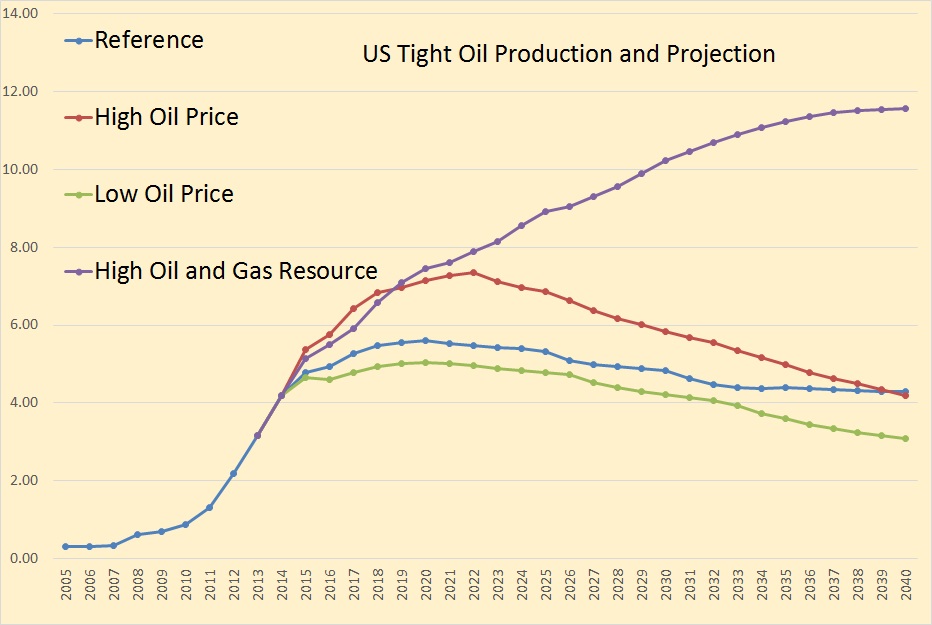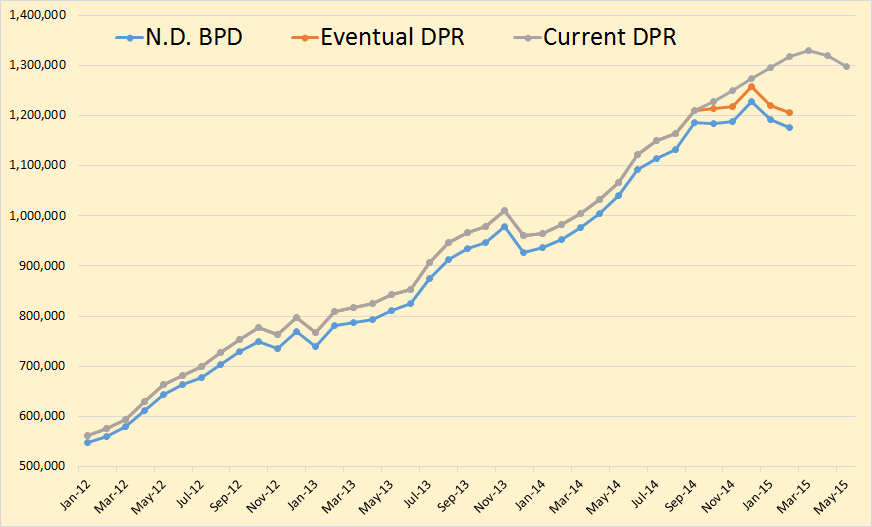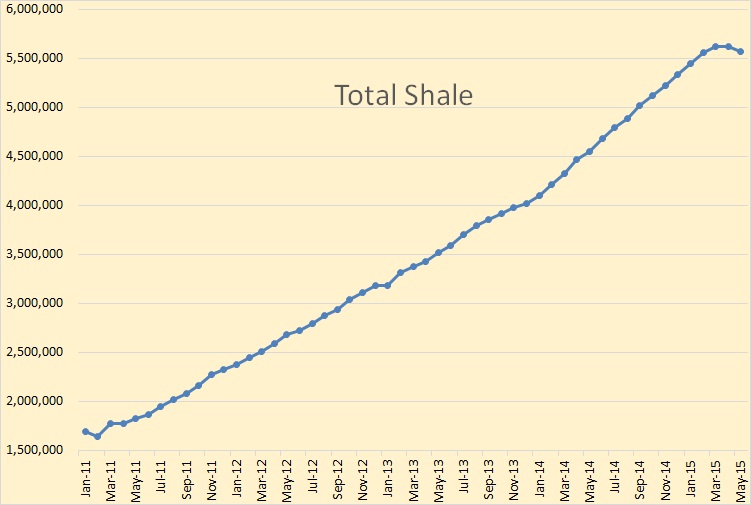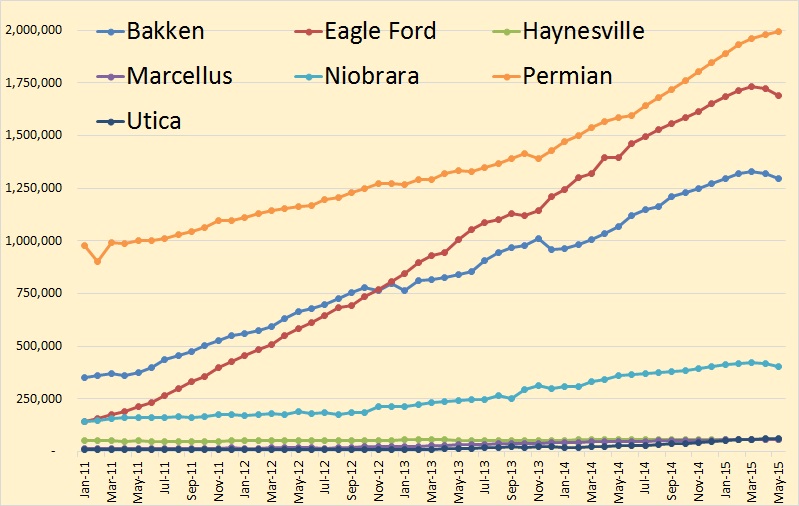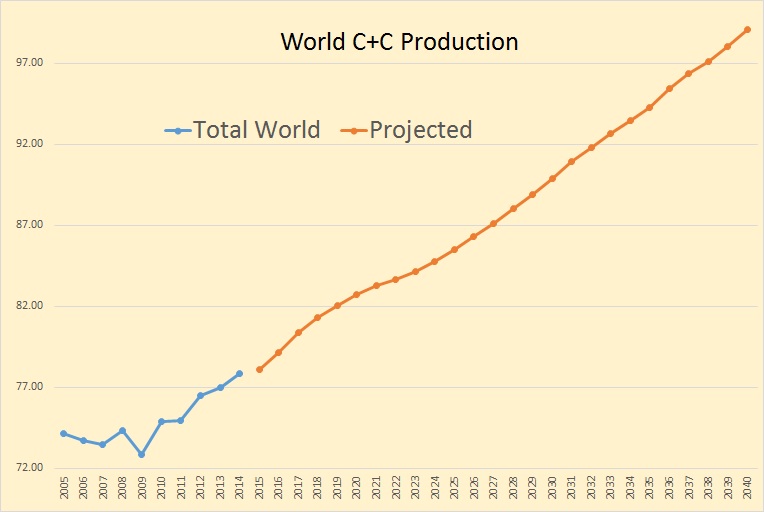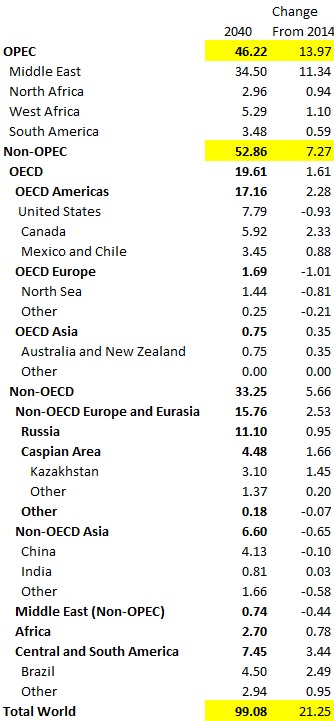The Texas Railroad Commission has released its incomplete production data for February. The RRC also estimates final production but that data has not been posted yet.
All Texas RRC data is through February. The EIA data is through January.
It looks like, after the final Texas data comes in, that February crude oil will be above January production but still below December production. It is my best guess that Texas production will be down about 80,000 barrels per day in January and up about 50,000 bpd in February or about 30,000 bpd below December production.
I always post the last six months data just so we can get some idea of the general trend. You can see the general trend is up until January when it took a huge hit and only partially recovered in February.
